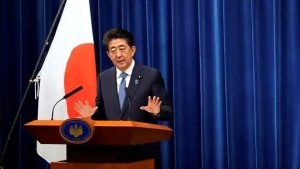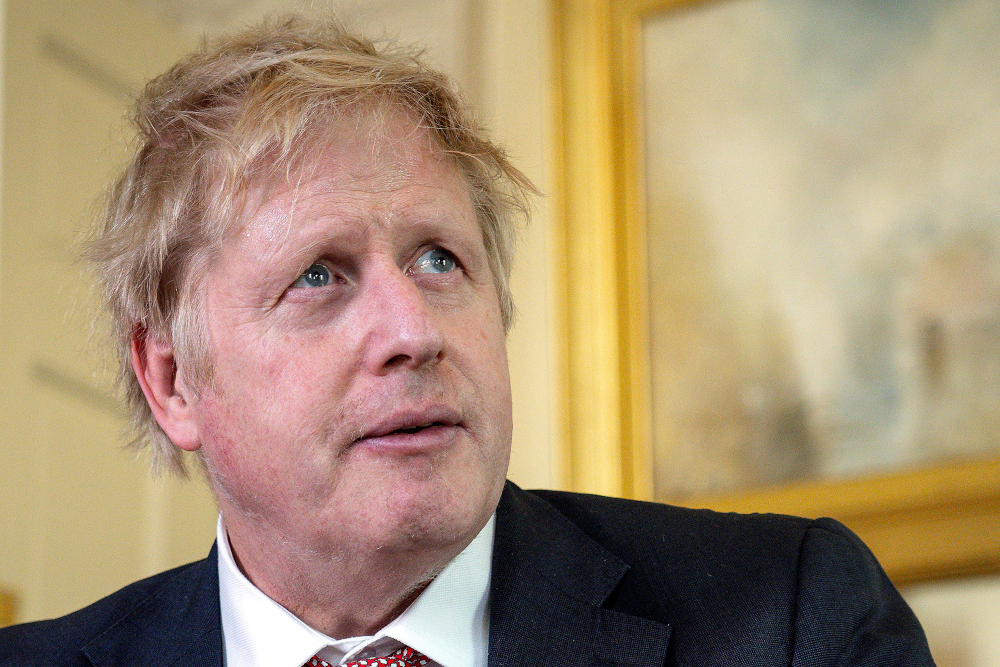Abe and his cabinet will run the government until a new premier is elected but will not be able to adopt new policies. The winner of the party election will hold the post until the end of Abe’s LDP term in September 2021.

Japanese Prime Minister Shinzo Abe
The abrupt resignation of Japan’s longest-serving prime minister, Shinzo Abe, triggered an election in his Liberal Democratic Party (LDP) to replace him as its president, followed by a vote in parliament to elect a new prime minister.
Abe and his cabinet will run the government until a new premier is elected but will not be able to adopt new policies. The winner of the party election will hold the post until the end of Abe’s LDP term in September 2021.
The new party president is virtually assured the premiership, since the LDP has a majority in parliament’s lower house.
Usually, the party must announce the election for its leader a month in advance, and its members of parliament vote along with grassroots members. But with Abe’s sudden departure, the LDP will hold a slimmed-down election to avoid a political vacuum, aiming for a vote around Sept. 13-15, public broadcaster NHK said on Sunday.
YOSHIHIDE SUGA, 71
Suga, a self-made politician, plans to join the race, media said on Sunday.
A loyal lieutenant since Abe’s troubled 2006-2007 first term, Suga was among the allies who pushed Abe to run again in 2012. Back in office, Abe tapped him as chief cabinet secretary, a pivotal role that includes acting as top government spokesman, coordinating policies and keeping bureaucrats in line.
LDP secretary-general Toshihiro Nikai’s faction will likely support Suga if he runs, Takeo Kawamura, a senior faction official, said on Sunday.
Talk of Suga as a contender bubbled up in April 2019 after he unveiled the imperial era name “Reiwa” for use on Japanese calendars after the enthronement of Emperor Naruhito.
Suga’s clout was dented by scandals that toppled two cabinet ministers close to him last October.
SHIGERU ISHIBA, 63
A hawkish former defence minister and rare LDP critic of Abe, Ishiba regularly tops surveys of lawmakers whom voters want to see as the next premier but is less popular with the party’s lawmakers.
The scaled-down LDP race could disadvantage Ishiba, a soft-spoken security maven who has also held portfolios for agriculture and reviving local economies.
He defeated Abe in the first round of a party election in 2012, thanks to strong grassroots support, but lost in the second round when only MPs could vote. In a 2018 party leadership poll, Ishiba lost heavily to Abe.
He has criticised the Bank of Japan’s ultra-low interest rates for hurting regional banks and called for higher public works spending to remedy growing inequality.
FUMIO KISHIDA, 63
Kishida was Abe’s foreign minister from 2012 to 2017, but diplomacy remained mainly in the prime minister’s grip.
The low-key lawmaker from Hiroshima has been widely seen as Abe’s preferred successor but ranks low in voter surveys. He has told supporters he is in the race.
Kishida hails from one of the party’s more dovish factions and is seen as less keen on revising the pacifist postwar constitution than Abe, for whom it was a cherished goal.
The BOJ’s hyper-easy monetary policy “cannot go on forever,” Kishida has said.
TARO KONO, 56
Defence Minister Kono has a reputation as a maverick but has toed the line on key Abe policies, including a stern stance in a feud with South Korea over wartime history.
He won the backing, should he choose to run, of Environment Minister Shinjiro Koizumi, the high-profile son of a popular former prime minister, who ruled himself out of the race on Sunday.
Educated at Georgetown University and a fluent English speaker, Kono is a former foreign minister and minister for administrative reform.
He has differentiated his conservative stances from those of his father, former chief cabinet secretary Yohei Kono, who authored a landmark 1993 apology to “comfort women”, a euphemism for women forced to work in Japan’s wartime military brothels.
TOSHIMITSU MOTEGI, 64
Abe’s foreign minister was previously economy minister, facing off with U.S. Trade Representative Robert Lighthizer in tough negotiations.
Motegi was also trade minister under Abe when he returned to power in 2012, tackling talks on the Trans-Pacific Partnership free trade pact.
Educated at the University of Tokyo and Harvard, Motegi was first elected to the lower house in 1993 from the then-opposition Japan New Party. He joined the LDP in 1995.
SEIKO NODA, TOMOMI INADA
Noda, 59, has made no secret of her desire to become Japan’s first female premier. An Abe critic, the former internal affairs minister, who also held the portfolio for women’s empowerment, fell short of the backing to join the 2918 LDP race.
Inada, 61, a fiscally hawkish former defence minister and LDP policy chief, has expressed interest in joining the race to become the country’s first female premier. She is known as conservative Abe supporter.
KATSUNOBU KATO, YASUTOSHI NISHIMURA
As health minister, Kato, 64, was in the limelight in the early days of Japan’s coronavirus outbreak, but Economy Minister Nishimura, 57, a former trade official, has since emerged as point person on virus policy.
In 2015, Kato, a father of four, was handed the portfolio for boosting Japan’s rock-bottom birth rate, a task that has had little success. He is a former finance ministry official.

